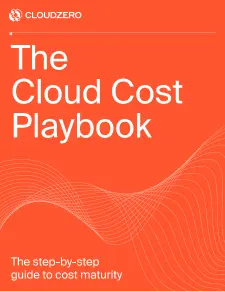Read a few articles on artificial intelligence and financial operations, and you’re bound to run across a sentence like this:
AI enables FinOps teams to reduce TCO and boost ROI.
Or one like this:
The future of FinOps uses agentic AI-powered systems to detect and remediate cost issues automatically.
Keep reading and you’ll find piece after piece that say a lot about AI and FinOps … without really saying anything.
Instead of beating around the digital bush, let’s break it down in plain language. AI agents will make it easier for financial operations teams to track cloud spending and keep budgets under control.
Now, let’s talk about how that might work.
Your Mission, Should You Choose to Accept It …
Agentic AI is now big business. Agentic is just a quicker way of saying that this type of AI can make decisions with minimal supervision.
According to PWC, 88% of senior executives say they plan to boost AI budgets in the next 12 months to support agentic tools. Research firm Gartner, however, predicts that 40% of these projects will be sidelined by 2027 due to budget overruns and unclear business value.
Just like the secret agents of film and screen, AI agents need a mission that lets them apply evolving intelligence to solve a problem.
For FinOps, one common mission is cloud cost management. But this isn’t just about spending less. It’s about getting more for what you use, and finding new ways to use it.
Best Practices For Agentic FinOps Platforms
Agentic AI is smart — it’s just not human smart.
Unlike the chatbots of ecommerce past, agentic tools leverage generative AI algorithms and large language models (LLMs) to capture content and apply context. This means they see your financial data as part of a larger whole. For example, while building a cloud-based app development area is costly, it can offer long-term benefits that far outweigh initial investments. Agentic tools can see both sides of that coin.
Here’s what agentic FinOps tools should help you do:
- Continuously monitor cloud usage and cost trends across environments
- Recommend opportunities like savings plans, resource optimization, or spot usage
- Flag anomalies in real time to reduce spend surprises
- Simulate trade-offs like cost vs. performance — to guide budget planning
Achieving this level of intelligence, however, requires massive amounts of time and training data. For humans, meanwhile, this type of contextual consideration comes naturally.
The result? Making best use of agentic FinOps platforms isn’t fire and forget. Instead, it requires three best practices:
1. Expect (and address) exceptions
AI tools are notoriously bad at handling exceptions. Effectively navigating these exceptions is the focus of a recent paper, Teaching AI to Handle Exceptions: Supervised Fine-Tuning with Human-Alignment Judgement.
The paper presented a simple scenario to both humans and AI: You want to bake a cake for your friend’s birthday, but you don’t want to spend more than $10 on flour. When you get to the store, flour costs $10.01. What do you do?
Not surprisingly, 92% of humans were fine paying the extra cent. AI, however, almost universally left the flour on the shelf. The researchers found that by giving AI both the task itself and the reasoning for why humans were willing to break the “rules”, the agentic solutions were far more likely to make the purchase.
The same applies to FinOps. If your cloud budget for a service is X, but the actual cost is X + 10 cents, you need tools smart enough to accept the exception. This is where cost allocation and real-time decision-making come in. AI needs human-aligned exceptions logic that reflects business priorities.
Related read: The 3 Constraints Of AI Adoption: Code, Servers, And Wallets
2. Make ’em an offer they can’t refuse
Negotiating is another area where AI struggles. In a similar vein to exceptions, AI likes the rules — so much so that it becomes a ‘killer’ at the negotiating table, refusing to concede on even minor points. According to a March 2025 paper, the result is fewer deals done and lower deal values when compared to human strategies that included a more cooperative, flexible approach.
Why does this matter for FinOps? Because cloud cost management is all about the art of negotiation. Not with providers, but with apps and services all competing for space and time. For example, if you tell agentic systems to prioritize savings over performance without any leeway, you may find critical processes running at a snail’s pace because, on paper, it’s more cost-effective. In the real world, you could be losing business.
Compromise — which for AI means weighting the value of different operations to create a chain of priority — helps keep everyone at the table.
3. Take trust seriously
While agentic AI use is on the rise, user trust lags. Deloitte found that 19.9% of employees don’t trust agentic AI to make any decisions, and 59.7% said AI agents should only make decisions within a defined framework.
Why does that matter? Because you still need humans in the loop to review AI decisions and implement recommendations. If staff don’t trust AI, they’ll disregard its advice, even when it’s right.
To build trust, start with small wins. Showcase the ability of agentic FinOps to identify hidden cost overruns in a specific cloud environment, and let staff examine the solutions offered. The goal is to have teams and tools work in tandem, not on opposite sides of the FinOps fence.
License To Chill
Deloitte describes the next-generation workforce as “human-led, agent-enabled, and outcome-anchored.” It’s a research-ready way to say that making best use of agentic AI means putting people in charge and having a clear end goal.
Maybe that goal is to understand exactly how much you spend on each of your cloud environments, giving you a baseline for next year’s budget. Maybe it’s identifying apps or services that were spun up and never spun down, leaving you with a sneaky, ongoing cost. Or maybe you’re looking for a solution that can automatically scale resources up or down as needed to intelligently manage your spending.
Agentic platforms offer a way for FinOps teams to slow down, step back, and chill out. This isn’t about taking a break; it’s about getting the big picture of what’s going on in your technology stack and what teams can do to optimize spending and minimize waste.
As multi-cloud architectures become commonplace, cost visibility and accountability are more important than ever. Agentic FinOps tools offer an intelligent solution to cost management — as long as they’re given clear mission parameters and comprehensive training before they hit the field.
Related read: Smooth Operator: The Role Of Autonomous FinOps In Cloud Cost Management








